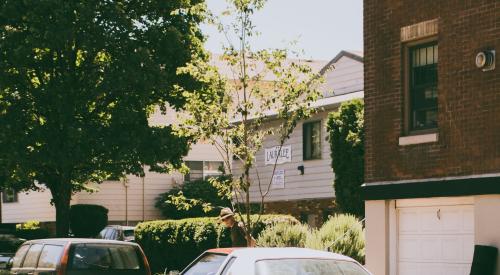Photo: Flickr user / Jamie (CC by 2.0)
When real estate website Zillow released the results of its Home Price Expectations surveys in 2018 and again earlier this year, saying that the country’s next recession would likely take place in 2020, it set off a chain reaction that is still going strong. The company reported that half of the 100 real estate, economic, and market experts asked to weigh in on a variety of questions about the economy said they expect a recession to occur in 2020, and many, especially in the media, seized on the idea, linking an impending recession in various ways to home building.
Zillow, of course, isn’t the only organization predicting a recession in 2020, but because of its ties to the housing industry, observers tend to perceive more of a connection between home building and a recession than might actually exist, even though the company’s top-line remarks say a housing slowdown is unlikely to be the cause. In the 2019 survey, respondents instead chose trade policies, a stock market correction, and a geopolitical crisis from a menu of possibilities as the most probable culprits.
In addition, Zillow stated that not only was a slowdown in the housing market the least likely cause of the next recession, but that the reverse was probably true: that a recession caused by other events would adversely affect housing.
There is no doubt that a recession will occur at some point; it’s inevitable and probably will happen sooner than later. Previously, the longest the U.S. has gone without a recession was in the years between 1991 and 2001. That streak has just been beaten, and most economists feel certain that the current one can’t continue for much longer.
So how do housing experts expect this next recession to affect the housing industry? Here’s what some of the usual suspects are saying.
NAHB projects total housing starts for 2019 to end up around 1,243,000, increasing to 1,286,000 in 2020 and 1,315,000 in 2021. New single-family home sales will dip slightly from 633,000 in 2019 to 629,000 in 2020, heading up to 644,000 in 2021. Fannie Mae’s projections see a better 2019, with total starts ending up around 1,264,000, but increasing only slightly to 1,267,000 in 2020. Its single-family numbers are more bullish, with a 2019 total of 675,000, dropping to 669,000 in 2020.
Freddie Mac is forecasting that the average 30-year fixed rate mortgage will remain fairly steady, decreasing from 4% in 2019 to 3.8% in 2020, and housing prices will appreciate 3.3% in 2019 and 2.8% in 2020. Fannie Mae has mortgage rates dropping, from 3.9% in 2019 to 3.6% in 2020. Fannie’s price forecast says the median new-home price moved very little from 2018 to 2019, but will increase by 4.6% in 2020.
In other words, analysts’ projections indicate very little will change: starts will continue to increase, as will sales, housing prices will continue to escalate, and mortgage rates will stay low.
Projections are just that, of course, and are not carved in stone. But there are good reasons for builders to feel cautiously optimistic. One is that there’s a limited supply of homes and a growing demand for them. And, according to a recent National Association of Realtors survey, 54% of Americans earning less than $50,000 think now is a good time to buy, as do 64% of those earning $50,000 to $100,000.
Many builders are already working to accommodate these likely buyers of smaller homes, with the median square footage of single-family homes falling 4.3% in the second quarter of 2019 alone. Our annual housing forecast survey indicates that trend will continue, with more than 40% of respondents saying that building smaller homes will be the biggest growth opportunity in 2020.
Yes, there will be a recession, and it probably will happen in the not-too-distant future. But housing’s fundamentals remain strong, and the best, and perhaps only, tack builders can take is to continue to place emphasis on both optimism and caution.
Access a PDF of this article in Professional Builder's December 2019 digital edition












